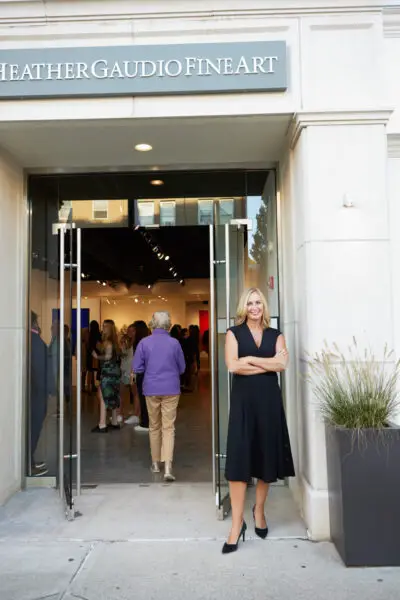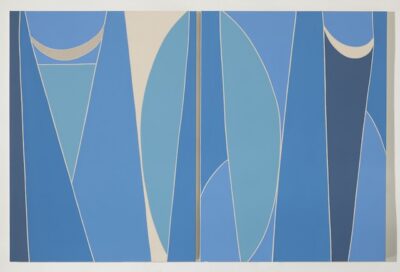
Heather Gaudio Fine Art specializes in emerging and established artists, offering paintings, works on paper, photographs and sculptures. The gallery provides a full range of art advisory services, from forming and maintaining a collection to securing secondary market material and assisting with framing and installation. After a decade in New Canaan, she moved her gallery to Greenwich last September.
We caught up with Gaudio to learn more about her business and see how it succeeds in the cutthroat commercial art world:
The Westfair Business Journal’s “Eye on Small Business” stories spotlight commercial businesses and how effectively they operate. What can you share about the gallery as a business in terms of volume of sales, trends in the art market and art as investment?
“Owning a gallery is a high stakes/high reward equation that also entails a level of design, investment and intuition. Volume of sales follows suit with the 80/20 rule. A small number of clients and related projects can yield enough sales to cover costs for the year. Having an exceptional staff and loyal clientele is a must that requires team effort and commonalities in interest and energy.”
You say you deal with “blue-chip secondary-market artwork.” What is that?
“Blue chip refers to artworks created by recognizable artists that have a large collector base and established market, selling at high prices. Secondary market includes works by reputed artists that sell privately or through the auction houses. Dealers of secondary-market work typically have little contact with living artists and sell with intent to profit and buy at investment level. The primary market handles the marketing and exhibition of living artists.”
Can you describe your ”typical” collector? Are millennials/Gen Zs collecting?
“Our collectors fall into Gen X, baby boomers and millennials. Gen Z is starting out, and it will be interesting to see how social and technological factors influence their art-buying interests.”
You studied art at the Scuola Lorenzo de’ Medici in Florence and in Santa Fe, New Mexico, earning your Bachelor of Fine Arts and going on to work for the Gerald Peters Gallery there. Tell us more.
“My tenure with the Gerald Peters Gallery (in Santa Fe) gave me a view into many collecting categories and types of collectors. There was a Southwestern historical component, but GPG has photography, contemporary and secondary-market artworks, so while there was a regional collector base, the reach of the gallery was national and international in nature.”
Sounds like things were going pretty well. Why did you move back East?
“I’m originally from New York and…returned to the city to work as a consultant and eventually (became) director of Wally Findlay Galleries. Forum Gallery followed and from there, I relocated to Connecticut for the schools and to raise our family.”
You also put on up to eight shows a year, including the current “Summer Show,” an international group exhibit featuring paintings, works on paper and sculptures by nine of the gallery’s roster artists. (It runs through Sept. 14.) That seems a high number. What are the advantages/challenges of so many annual shows?
“We are hosting seven exhibitions this year, special events in the gallery and attending art fairs. The benefit of having so many exhibits is the exposure for our artists to be seen and appreciated by the general public and in turn to offer a variety of visual experiences and opportunities for the community and our collectors. The challenges require a competent staff to manage logistics, insurance, artists and their needs, marketing, press and curation of each show.”























